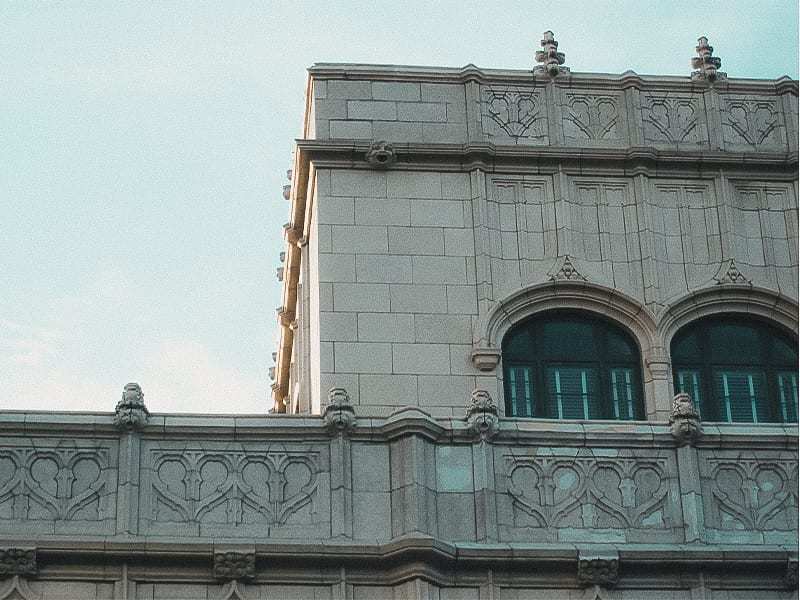exterior arcade
The tour begins outside of the Grove Arcade at the North Entrance, by the winged lions.

Across the street, Grove’s Battery Park Hotel was preserved on the outside, thanks to Federal tax credits, and was converted to apartments for the elderly in 1987. Built in 1922, the building was the first project in Grove’s attempt to re-make downtown Asheville. From an upstairs room, Grove oversaw the work of his masterpiece, the Arcade, before dying in 1927 with the project not yet complete. A proposed tower on the Arcade was never built.
Walk to the northeastern corner of the Arcade and look north to see the Basilica of Saint Lawrence, located to the right of Battery Park Apartments. The Basilica predates the removal of Battery Hill. Noted Spanish architect Rafael Guastavino designed the church in 1906, using his trademark system of building self-supporting domes with overlapping tile. The Basilica and the Arcade shared with the Biltmore Estate and the Grove Park Inn the employment of skilled European tradesmen.
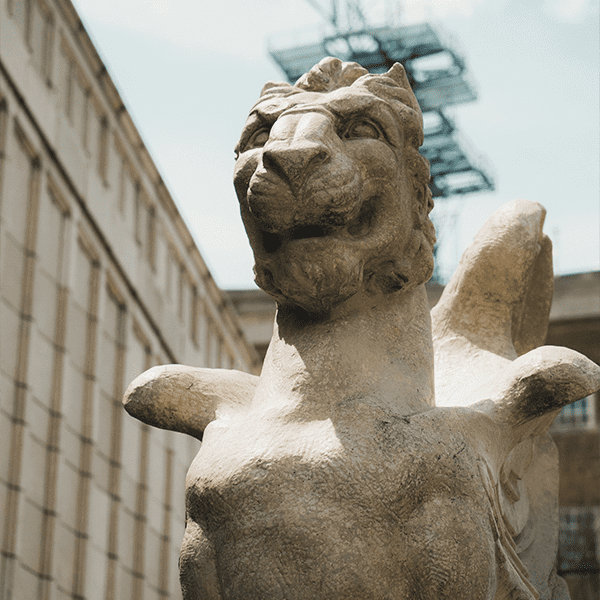

The winged lions the ramps and the Grove panel above the doors at the North Entrance establish the Arcade's orientation.
The ramps on the exterior were designed by Charles N. Parker, the building's architect.
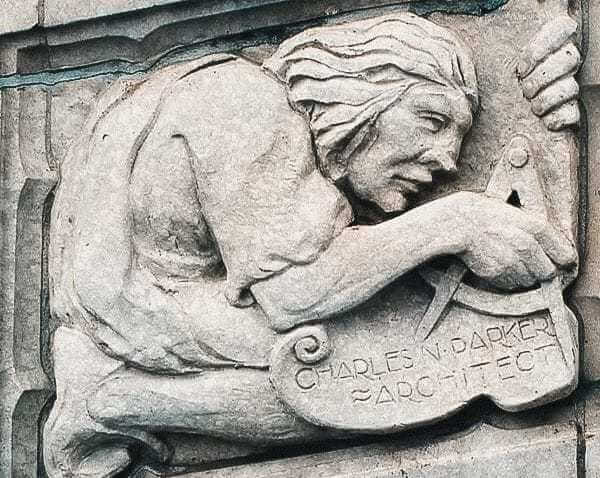

At the West Entrance on O. Henry Avenue entrance, you will find an Arabesque metal screen.
Did You Know...
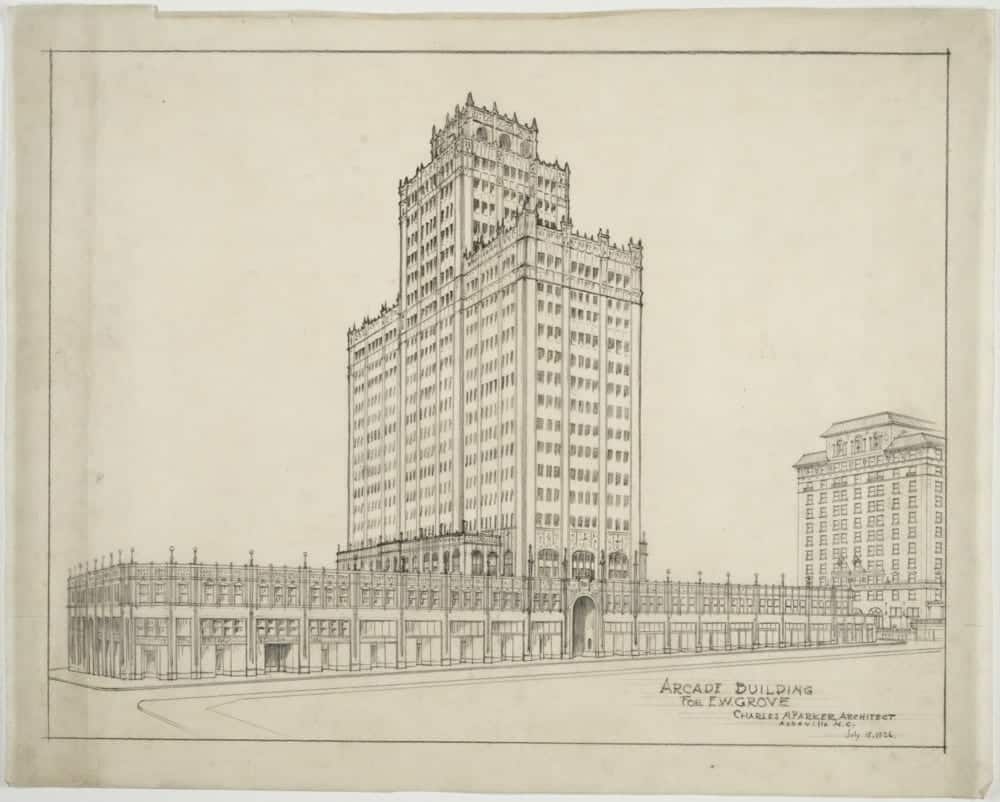

The Asheville Citizen-Times offices, across O. Henry Avenue, moved from Haywood Street in 1939.
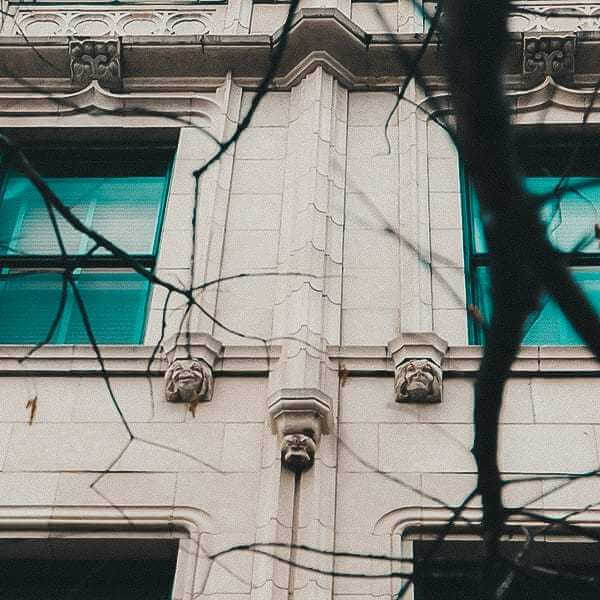
On Battery Park, you will see a band of 88 gargoyle heads punctuating the exterior of the building.
In 1942, during World War II, the Federal Government took over Grove Arcade.

Grove Arcade was marketed as the "heart" of the city.
